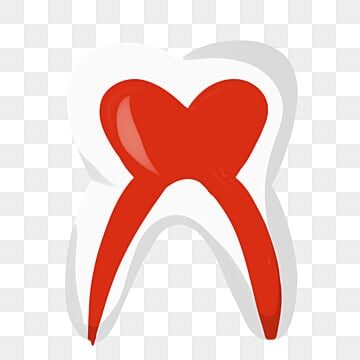Obstructive Sleep Apnea Syndrome (OSAS) is a common sleep disorder that affects millions of people worldwide. This condition, characterized by repeated episodes of blocked airflow during sleep, can have serious consequences for one's overall health and well-being. Fortunately, there are various treatment options available, and dental interventions have emerged as effective solutions for managing OSAS. In this article, we will delve into the causes, symptoms, and diagnosis of OSAS, as well as explore the dental treatment options that can improve the quality of life for those affected by this condition. By understanding the role of dental interventions in treating OSAS, we can uncover new ways to alleviate the symptoms and enhance sleep quality for individuals suffering from this disorder.
1. Understanding Obstructive Sleep Apnea Syndrome: Causes, Symptoms, and Diagnosis
Obstructive Sleep Apnea Syndrome (OSAS) is a common sleep disorder that affects millions of people worldwide. It is characterized by repeated episodes of partial or complete obstruction of the upper airway during sleep, leading to disrupted breathing patterns and interrupted sleep cycles. This condition can have detrimental effects on both physical and mental health if left untreated.
The primary cause of OSAS is the relaxation of muscles in the throat and tongue during sleep, which causes the airway to narrow or collapse. This obstruction results in a decrease or complete cessation of airflow, leading to a drop in blood oxygen levels. The brain then signals the body to wake up briefly in order to reopen the airway and restore normal breathing. These interruptions can occur numerous times throughout the night, leaving individuals feeling tired and fatigued the next day.
While anyone can develop OSAS, certain factors increase the risk of developing this condition. Obesity, excess weight around the neck, and a family history of sleep apnea can predispose individuals to this disorder. Other risk factors include a narrow airway, enlarged tonsils or adenoids, nasal congestion, and certain medical conditions such as hypothyroidism and gastroesophageal reflux disease (GERD).
Recognizing the symptoms of OSAS is crucial for early diagnosis and treatment. The most common symptoms include loud and persistent snoring, gasping or choking during sleep, excessive daytime sleepiness, morning headaches, difficulty concentrating, and irritability. It is important to note that not everyone who snores has sleep apnea, but chronic and loud snoring should not be ignored as it
2. Dental Treatment Options for Obstructive Sleep Apnea Syndrome: Exploring Effective Solutions
Obstructive sleep apnea syndrome (OSAS) is a serious sleep disorder that affects millions of people worldwide. It is characterized by repeated episodes of partial or complete obstruction of the upper airway during sleep, leading to disrupted breathing patterns and a decrease in oxygen levels. While continuous positive airway pressure (CPAP) therapy is considered the gold standard treatment for OSAS, some patients may find it uncomfortable or struggle with compliance. In such cases, dental treatment options can offer effective solutions.
One of the most common dental treatment options for OSAS is the use of oral appliances, also known as mandibular advancement devices (MADs). These devices are custom-made to fit the patient's mouth and work by advancing the lower jaw forward, thus opening up the airway and preventing collapse during sleep. MADs are usually worn during the night and are known to significantly reduce the frequency and severity of apnea episodes.
Another dental treatment option for OSAS is the use of tongue-retaining devices (TRDs). Unlike MADs, TRDs do not reposition the jaw but instead hold the tongue in a forward position, preventing it from obstructing the airway. This type of device is particularly useful for individuals whose tongue plays a significant role in their airway obstruction. TRDs can be effective in reducing apnea episodes and improving sleep quality.
In some cases, a combination of MADs and TRDs may be recommended to achieve optimal results. These combination devices, also known as hybrid devices, aim to address both jaw and tongue-related obstructions, providing comprehensive treatment for OSAS.
Orth
3. Improving Quality of Life: How Dental Interventions Can Successfully Treat Obstructive Sleep Apnea Syndrome
Obstructive Sleep Apnea Syndrome (OSAS) is a serious sleep disorder that affects millions of people worldwide. It is characterized by repetitive episodes of complete or partial blockage of the upper airway during sleep, leading to oxygen deprivation and frequent awakenings. This condition not only disrupts the quality of sleep but also poses significant health risks, including cardiovascular problems, daytime fatigue, and decreased cognitive function.
While there are several treatment options available for OSAS, dental interventions have emerged as a successful and promising approach. These interventions primarily aim to improve the airflow by realigning the jaw and tongue, thus preventing the collapse of the upper airway during sleep. They can significantly alleviate the symptoms of OSAS and improve the overall quality of life for affected individuals.
One of the most common dental interventions for OSAS is the use of oral appliances. These custom-made devices are designed to hold the jaw and tongue in a forward position, effectively opening up the airway. By repositioning the structures that contribute to airway obstruction, oral appliances can reduce or eliminate snoring and apnea episodes. They are comfortable to wear, easy to use, and highly effective in mild to moderate cases of OSAS.
Another dental intervention that can successfully treat OSAS is maxillomandibular advancement surgery (MMA). This procedure involves repositioning the upper and lower jaws forward to enlarge the airway and improve its stability. MMA is usually recommended for severe cases of OSAS or when other treatment options have failed. It has shown remarkable success rates in improving sleep quality, eliminating snoring, and
